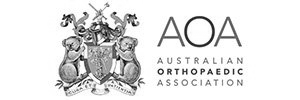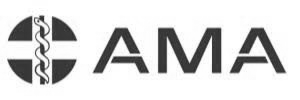Knee Arthroscopy
What is an Arthroscopy?
An Arthroscopy is a surgical procedure in which a fibre-optic telescope is inserted into the joint.
Arthroscopy allows direct visualization of all parts of the knee and also allows surgical procedures to be performed by minimally invasive ‘keyhole’ surgery.
The benefits of arthroscopy include
- small incisions
- faster healing
- rapid recovery, and
- less scarring
Arthroscopic surgical procedures are usually performed on an outpatient basis. This means patients can return home on the same day as the procedure.
What Procedures can be performed via an Arthroscopy?
An Arthroscopy can utilized to address
- Meniscus tears
- Loose pieces of cartilage
- Loose bodies floating in the knee
- Perform the majority of an ACL reconstruction
- To obtain a sample of the lining of the knee for diagnostic purposes
- Washout infections
What are the risks of performing an Arthroscopy?
An Arthroscopy is a simple, minimally invasive, and commonly performed day surgery procedure. Like all surgical procedures though, complications can occur.
Complications specific to Arthroscopy can include:
- Infection. Your doctor incidence of infection following an Arthroscopy is 1:1000
- Bleeding. The bleeding can arise from the wound or within the knee itself. Very uncommonly the knee can bleed excessively into the knee after the surgery and require either a needle into the knee or a repeat operation to evacuate the blood. Your doctor has never had to repeat the procedure to evacuate blood. In a single figure number of cases, he has had to remove blood via a needle.
- Blood clots in the leg (DVT) or lung (Pulmonary embolus)
- Stiffness
- Ongoing pain
Your doctor will discuss these risks with you in detail prior to embarking on any surgery.
What should I be aware of prior to surgery?
You should refrain from performing activities that exacerbate your symptoms, and in particular activities that cause swelling.
If you are:
- on any “blood thinning” medications, you need to inform your doctor as they may need to be ceased prior to surgery being performed, or,
- have any wounds or abrasions on the operated leg you need to inform your doctor as this can increase your risk of infection.
You need to remember to bring your scans/x rays to the hospital with you.
You should have a clear understanding of why you are having the surgery, the risks involved and the process of recovering after surgery.
What happens on the day prior to surgery?
You will call the hospital in the afternoon of the day prior to surgery. You will be informed of the time to present to hospital and what time to cease eating and drinking from.
What happens on the day of surgery?
On admission to hospital you will be seen by a lot of hospital staff. They may include the clerk at the front desk, to the nurses who check on you, to the porter who will transport you to and from the operating theatre. Everyone has you best interests at heart with the aim of making your surgical journey as safe as possible.
You will be seen by your anaesthetist who will explain to you the options of anaesthesia available to you. In the vast majority of cases you will have a general anaesthetic but sometimes a spinal anaesthetic can be used together with varying degrees of sedation.
Your doctor will see you prior to your anaesthetic. He will make your operated leg and answer any last minute queries that you may have.
After your surgery you will spend some time in the recovery ward. When you are awake enough, any pain is under control and you are medically stable, you will be transferred back to the “Day Surgery Ward”.
You will be discharged from the “Day Surgery Ward” when you have tolerated light food and fluid, any pain is under control and you can mobilise safely.
Can I drive myself home after surgery?
You cannot drive yourself home after surgery and should not drive for at least 24 hours after your surgery.
Will I need crutches after surgery?
The vast majority of our doctor's patients (>95%), do not require the use of crutches after an Arthroscopy. You will be able to bear full weight on the leg limited by pain.
Will I need pain killing medication after surgery?
It is common to require some pain killing medication after surgery. Some patients require very little medication and others require a lot.
You will be given a script for this medication by your anaesthetist on the day of surgery. You need to take enough medication so that you are comfortable after the surgery.
How active should I be after surgery?
It’s important to try and perform gentle activities of daily living and simple exercises that will be shown to you after surgery to minimize your risks of developing complications. You should not be doing anything excessive as this causes pain and worsens swelling.
When do I see the doctor again and what happens at that consultation?
You will be seen by your doctor approximately 7-10 days after your surgery. Our staff will contact you after your surgery to assess your recovery, answer any queries and to remind you of your follow up appointment.
At your follow up appointment, your doctor will ensure you do not have any signs or symptoms of complications. He will show you pictures taken from inside your knee during your surgery and explain the surgery that was performed.
Your dressings will be changed and any sutures will be removed.
Further post surgery rehabilitation will be explained to you.





